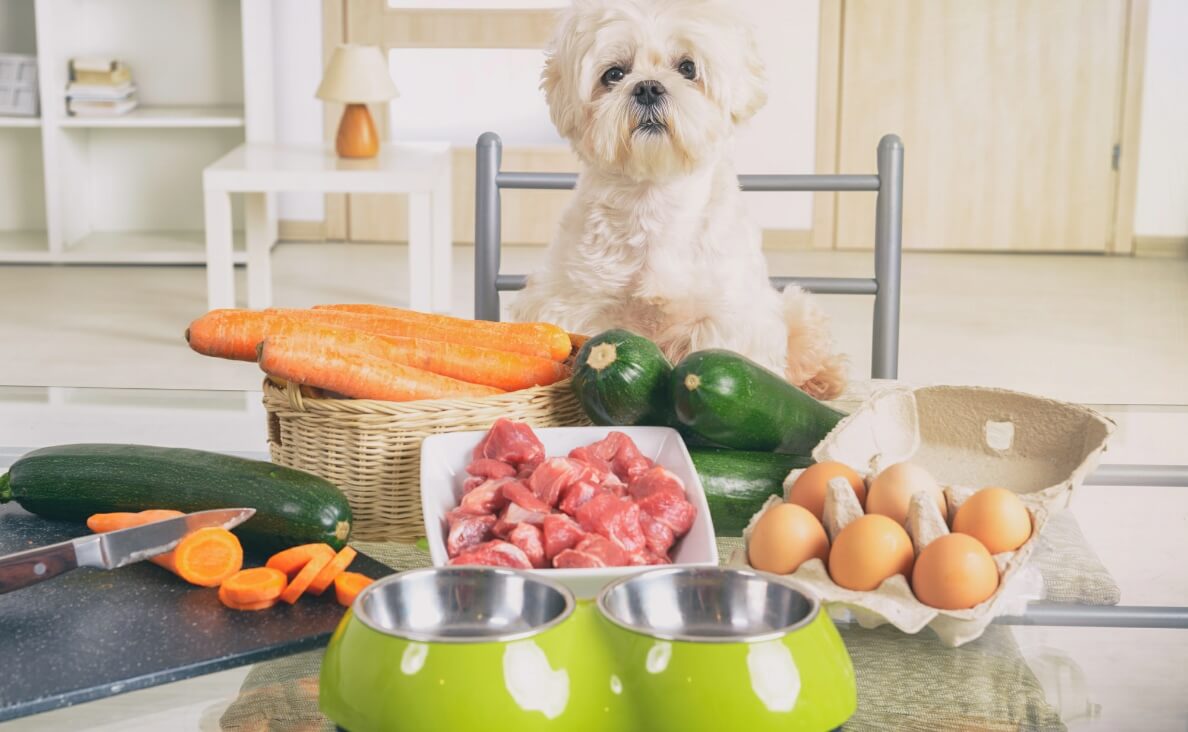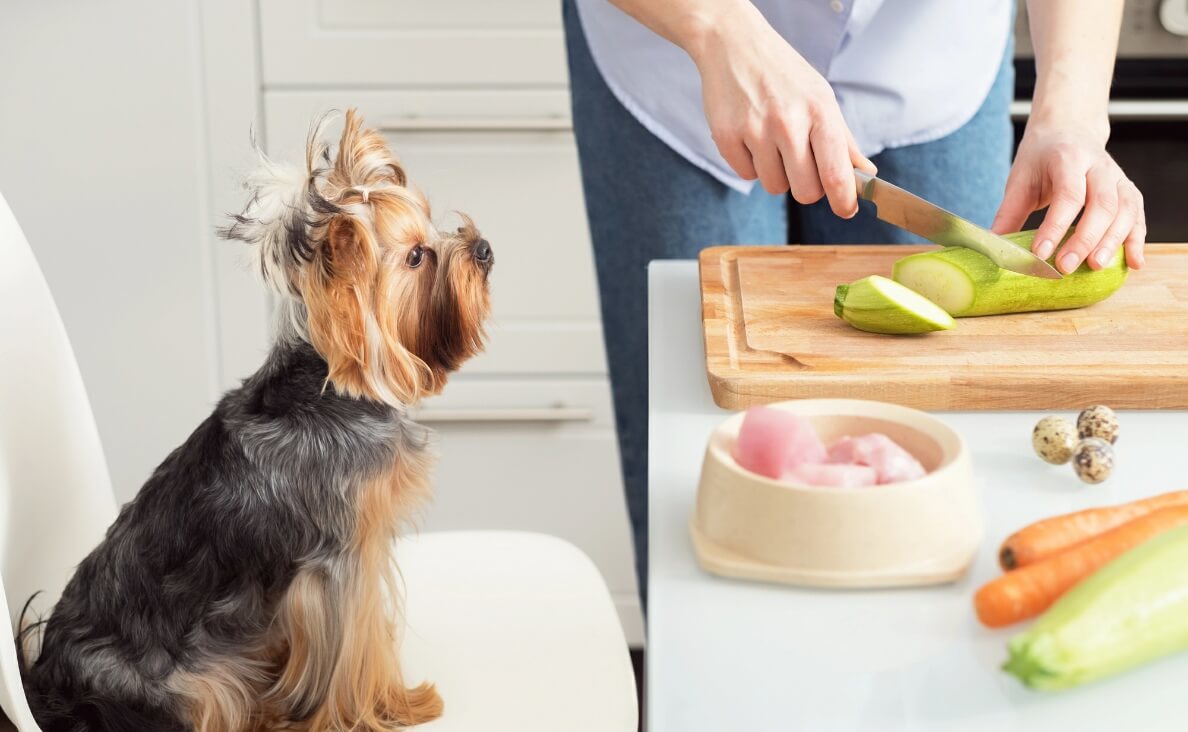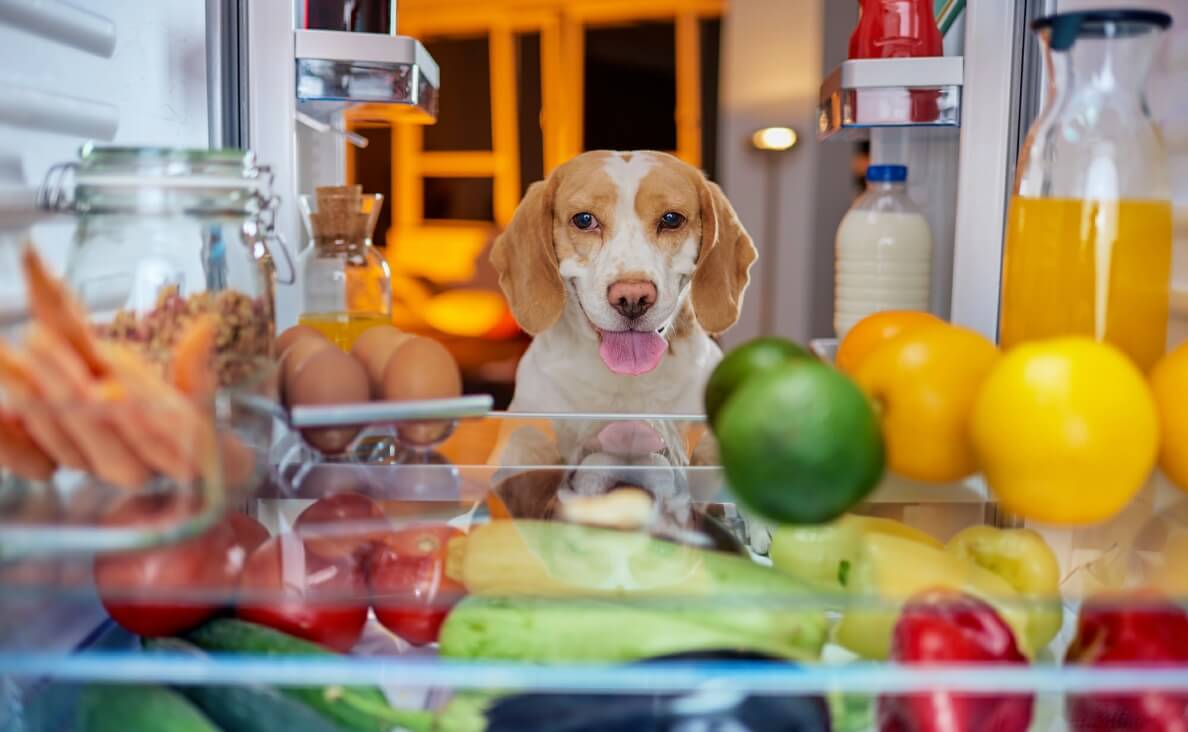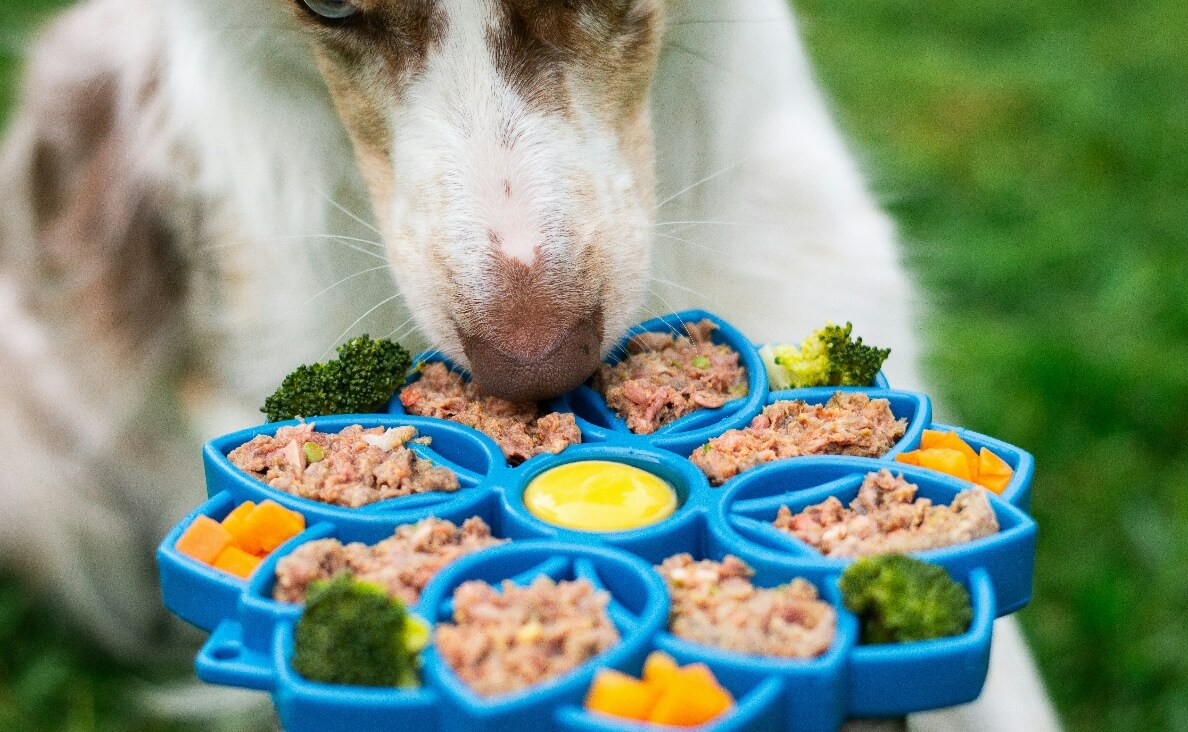
More and more pet parents are exploring homemade dog food as a way to give their furry companions the healthiest life possible. From controlling ingredients to avoiding artificial preservatives, the idea of preparing meals at home sounds appealing—but is it the right move for your dog?
In this post, we’ll explore the benefits, risks, and essential considerations that come with switching to a homemade dog food diet.
What Is Homemade Dog Food?
Homemade dog food refers to meals prepared at home using fresh, whole ingredients rather than store-bought kibble or canned food. These meals are designed to provide your dog with a complete and balanced diet, often tailored to specific health needs or preferences.
Homemade dog food isn’t just about giving your pup leftovers from the dinner table. It involves careful planning, nutritional knowledge, and often veterinary input to ensure your dog is getting the right mix of proteins, carbohydrates, fats, vitamins, and minerals.
Related: Is It Safe for Dogs to Eat Human Food?

Benefits of Homemade Dog Food
There are many compelling reasons why pet parents consider switching to homemade dog food:
- Ingredient control: You know exactly what goes into your dog’s bowl—no fillers, by-products, or mystery meats.
- Customization: Homemade dog food can be tailored to your dog’s specific needs, whether that means avoiding allergens or supporting a health condition.
- Related: 5 Signs Your Dog Has Food Allergies
- Freshness: Meals are made with whole, unprocessed ingredients, often leading to better taste and digestibility.
- Transparency: You eliminate the guesswork involved in reading complicated pet food labels.
Many dog owners who switch to homemade dog food report improvements in energy levels, coat condition, digestion, and even behavior.
Risks and Challenges
While homemade dog food has clear advantages, it also comes with responsibilities:
- Nutritional Imbalance: The biggest risk of homemade dog food is not meeting your dog’s complete dietary needs. Dogs require specific nutrients—like calcium, phosphorus, and taurine—that can be difficult to balance without professional guidance.
- Time Commitment: Preparing meals from scratch for your dog takes time, planning, and consistency.
- Higher Costs: Quality ingredients, supplements, and storage containers can add up quickly.
- Food Safety: You’re responsible for safe storage, proper food handling, and avoiding cross-contamination.
If you’re not prepared to commit to doing it right, homemade dog food can actually do more harm than good.
Related: 8 Trustworthy Tips for Selecting the Right Dog Food

What Do Veterinarians Say?
Most veterinarians agree that homemade dog food can be healthy—if it’s done correctly.
They emphasize the importance of consulting with a vet or a certified veterinary nutritionist before making the switch. Dogs need a wide range of essential nutrients that aren’t always easy to supply with home-cooked meals unless you’re following a trusted, balanced recipe.
Your vet may also recommend regular health screenings and dietary adjustments to ensure your homemade dog food plan continues to meet your pup’s needs as they age.
How to Do It Right (If You Choose To)
If you’re ready to explore homemade dog food, here’s how to get started on the right paw:
- Use Verified Recipes: Only use recipes from veterinarians or certified pet nutritionists. Many DIY dog food blogs lack proper nutritional balance.
- Follow Recipes Exactly: Don’t guess or substitute ingredients. Even small changes can disrupt the nutrient profile.
- Add Supplements: Homemade dog food almost always requires supplements—especially calcium, vitamin D, and essential fatty acids.
- Weigh and Measure Portions: Use a food scale and measuring tools to ensure consistent serving sizes.
- Rotate Ingredients Carefully: Variety is important, but introduce new ingredients slowly and mindfully.
- Monitor Your Dog: Watch for signs of weight gain, lethargy, or digestive issues. Keep your vet informed.
Done thoughtfully, homemade dog food can be a safe and satisfying way to nourish your dog.

What You Need to Know Before You Switch to Homemade Dog Food
Before you ditch the kibble, consider these must-know tips:
- Transition Slowly: Switch gradually over 7–10 days to avoid gastrointestinal upset. Start by mixing a small amount of homemade dog food with your dog’s current food, increasing slowly.
Related: Seamless Tips for Switching Dog Food Without Tummy Issues
- Prep Your Kitchen: Invest in a digital scale, measuring cups, and food-safe containers to keep portions accurate and meals fresh.
- Use Safe, High-Quality Ingredients: Choose human-grade meats and fresh vegetables. Never feed toxic foods like onions, garlic, grapes, or macadamia nuts.
- Plan for Weekly Meal Prep: Batch cooking can help you save time, but it still requires a consistent schedule and freezer space.
- Know It’s a Commitment: Homemade dog food isn’t a “set it and forget it” approach. It requires regular planning, cooking, and nutritional analysis.
- Schedule Vet Check-Ins: A homemade diet needs ongoing veterinary support to monitor your dog’s health and catch any deficiencies early.
When Homemade Dog Food May Be a Good Fit
Homemade dog food isn’t for everyone—but in some cases, it might be just what your pup needs:
- Food sensitivities or allergies: Homemade meals can help eliminate problem ingredients.
- Chronic health conditions: Dogs with kidney disease, pancreatitis, or IBD may require customized diets.
- Picky eaters: Some dogs prefer the smell and taste of freshly cooked meals.
Related: What To Do If Your Dog is a Picky Eater
- Owners who enjoy cooking: If you’re already comfortable in the kitchen and enjoy prepping meals, homemade dog food can be rewarding.
If you’re considering this path, start by speaking with your vet or a pet nutrition expert to determine whether your dog could benefit from homemade meals.

Store-Bought vs. Homemade Dog Food
How does homemade dog food compare to commercial options?
| Feature | Store-Bought | Homemade Dog Food |
| Convenience | High | Low–Moderate (batch cooking) |
| Nutritional Control | Moderate | High (if done right) |
| Cost | Varies (low to premium) | Moderate–High |
| Customization | Limited | Fully customizable |
| Safety | Regulated | Owner is responsible |
If you’re looking for a middle ground, consider fresh-frozen vet-formulated foods. These offer many of the benefits of homemade dog food—without the burden of planning and prep.
Final Thoughts
Homemade dog food can be a healthy, rewarding choice—but it’s not the right fit for everyone. The decision should be based on your dog’s health, your lifestyle, and your willingness to put in the work to do it properly.
If you’re serious about making the switch, get the guidance you need, stay consistent, and monitor your dog’s health closely. A well-balanced homemade dog food diet can help your pup thrive—but only when done with care, knowledge, and commitment.

Let’s Hear from You!
Have you ever tried homemade dog food for your pup? What worked well—or didn’t work? Share your story in the comments below—we’d love to hear from you!

 What to Do If Your Dog is a Picky Eater
What to Do If Your Dog is a Picky Eater Is Peanut Butter Good for Dogs? What Pet Parents Should Know
Is Peanut Butter Good for Dogs? What Pet Parents Should Know 10 Easy Ways to Improve Your Dog’s Kibble Diet
10 Easy Ways to Improve Your Dog’s Kibble Diet High Value Treats for Dogs: What They Are and How to Use Them
High Value Treats for Dogs: What They Are and How to Use Them Understanding and Managing Dog Food Sensitivities
Understanding and Managing Dog Food Sensitivities






Leave a Reply